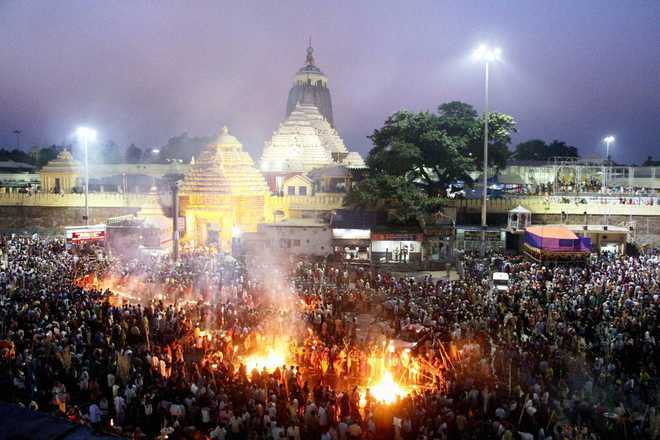Diwali Ritual In Odisha Resonates Halloween Belief!

Bhubaneswar: The end of autumn marks the beginning of festivals across the Globe. Deepavali or Diwali, celebrated in almost every part of India, is an annual affair which in popular parlance is about Sri Ram ascending the throne of Ayodhya after 14 years of self-imposed banishment to honour his father’s promise to his stepmother.
The rituals, however, vary from region to region. Up North and down South, and in West and Central India too, it’s about worshipping the Goddess of wealth Laxmi. In Bengal, Kali is worshipped on Diwali, the darkest night of the traditional month.
The Odias though, while following the tradition of decorating their house with earthen lamps and preparing good feast like the rest of India, observe a unique ritual on the evening of Diwali – ‘Pimpeii Kathi Daaka’.

On this evening, all the members of a family gather around the Basil (Tulasi) plant (which has a place for itself in the courtyard of every Odia household), and a puja is conducted wherein the ancestors of the family are offered Bhoga and then the family members burn Pimpeii or Kaunriya Kathis (jute sticks) while reciting a prayer:
Badabadua Ho, Andhare Aaso, Aalua Re Jao
Baaisi Pahacha re Gadagadau thao
(O the ancestors! Come in the darkness and return along the lighted path, and keep rolling on the 22 steps of Jagannath Temple)
Jagannath Temple plays a unique role in this ritual as this harking of the ancestors to descend from the nether world to bless their descendants on Earth, is celebrated in a grand way in Puri on Diwali evening as ‘Badabadua Daaka’. People gather in large numbers on 22 steps of Jagannath Temple and in front of the Singhadwara to offer Shradha to their ancestors and feed Mahaprasad to Brahmins. They then burn Kaunriya Kathis in the evening with the belief that it pleases the ancestors.

“There is this belief that since the coronation of Ram was a very special occasion, not just the people but also Gods and the dead too wanted to be present at the ceremony so the mortals on Earth lighted up lamps to make it easy for their ancestors to come to this world from world of the dead which is supposed to be surrounded by darkness,” said Renu Mohanty, who takes interest in the state’s customs and rituals.
But this ritual followed by Odias resonates with festivals observed in other parts of the globe to honour their ancestors like ‘Halloween’ and ‘Day of the Dead’.
HALLOWEEN
Halloween, or All Hallows Eve, belonging to Roman Catholics, was celebrated in ancient times by baking ‘soul cakes’ for the dead in purgatory and going door to door collecting those soul cakes in exchange for praying for the dead, the precursor of trick-or-treating.
Halloween is also thought to be associated with the Celtic festival ‘Samhain’, when ghosts and spirits were believed to be abroad, so they used to light bonfires and wear costumes to ward off ghosts. Over the years Halloween evolved into a day of activities like trick-or-treating, carving jack-o-lanterns, festive gatherings, donning costumes and eating treats.

In the West, the USA, Canada, Australia and UK, Halloween (October 31 every year) is celebrated in a big way and children especially look forward to this festival when they get to dress up weirdly and get loads of chocolate.
DAY OF THE DEAD
Meanwhile, in Mexico, it’s time to prepare for the Day of the Dead (November 1-2 this year). It’s an annual festival when family and friends gather to pray for and remember friends and family, who have died and help support their spiritual journey.
Private alters called Ofrenda are built, honouring the dead, using Calaveras, Aztec marigold and favourite food and beverages and also photos and memorabilia are placed on it. The intent is to encourage visits by the souls, so souls will hear the prayers and comments of the living directed at them. This particular Mexican celebration has been very beautifully presented in the movie Coco.
Is there some link to this commonality among the celebrations, held every year, in almost opposite parts of the world, besides the very obvious fact that they are all celebrated towards the end of autumn? Can the Kaunriya Kathi or Pimpeii Kathi burning by Odias, especially for their ancestors have been another import by the ancient mariners (Sadhabas) of Odisha? Because it is so similar to bonfire lighting by the Celts!! Have the Odia scholars ever thought of doing some studies to explain this rather extraordinary similarity among civilisations so far away from each other??

Comments are closed.